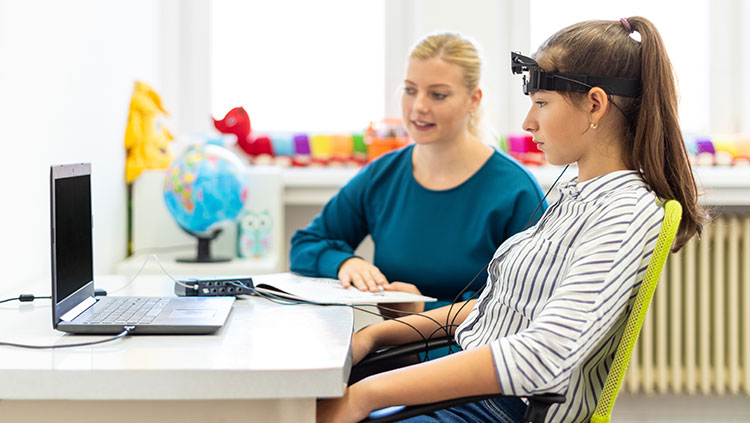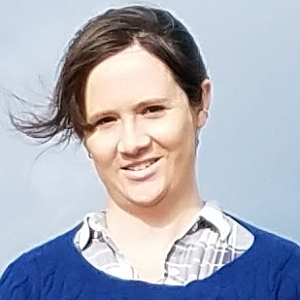Can Neurofeedback Help Kids With ADHD?
- Published25 Jun 2020
- Author Susan Young
- Source BrainFacts/SfN

Step into L. Eugene Arnold’s brain gym. For your workout today, you can choose to chomp dots like Pac Man or speed a spaceship through another world. But you won’t need a controller or touch screen for this game. Instead, an electrode on your scalp will record your brainwaves, and these signals will control the game.
This kind of training, called neurofeedback, has been touted to help kids with behavior disorders, athletes looking to improve performance, and executives seeking better leadership skills. But the evidence supporting its use is scant and conflicting. Still, Arnold, a physician researcher with the Wexner Medical Center at The Ohio State University, believes there is promise — and great need — for neurofeedback as a treatment for ADHD. He will soon wrap up a five-year study on brainwave-focused training as a treatment for kids 7 to 10 years old with ADHD.
What is neurofeedback?
Neurofeedback uses sensors on the scalp to detect electrical signals from the brain called brainwaves. Different brainwaves are associated with different activities, like sleeping or concentrating. The neurofeedback user concentrates to change the strength of brainwaves associated with their training goal. The idea for using neurofeedback to treat ADHD came from the observation that patients with ADHD had stronger theta waves (associated with being drowsy) and weaker beta waves (associated with paying attention and problem solving). This leads to a high theta:beta ratio. The hope is that kids with ADHD can use neurofeedback to learn to reduce that ratio.
What is a training session like?
At the start of each training session, an electrode is placed on the child’s scalp. Two additional electrodes, one on each ear, serve as a ground and reference. Each session lasts around 30 to 45 minutes and sessions repeat three times a week, for a total of 38 sessions on average. An adult trainer or “coach” is present to offer guidance. Some kids need encouragement and advice for how to proceed, while others don’t want the coach talking very much.
Can it help kids with ADHD?
The answer isn’t clear. There have been several studies, but they had mixed results. In some cases where researchers claimed it helped, the adults who tracked behavior changes knew about the treatment. This invites the possibility that the adult’s expectations influenced their ratings. In a couple studies where the adult raters did not know who was treated and who was not, no positive effect was seen. But these studies had fewer participants than our study.
Neurofeedback is a complex method. There is no consensus on the best equipment, methods, or software for processing the data, so there can be lots of differences between one set up to the next. Also, it’s possible for behavioral changes to come just from spending dozens of sessions with an adult encouraging the kid to focus on a screen.
What is your study investigating?
We tried to address these issues. All kids in the trial attended training sessions, had sensors on their scalp, and played the videogames, but some didn’t get real neurofeedback. The coaches, kids, and adult raters didn’t know who got the real neurofeedback and who didn’t. This way, behavior changes can’t be affected by expectations. The hope is that the training can help kids keep the theta:beta brainwave ratio low outside of the brain gym and training and see behavior improvements. If effective, the treatment would be an important option for kids with ADHD, many of whom aren’t helped by medications or experience significant side effects from drugs such as insomnia or loss of appetite.
Are there any risks or downsides?
Neurofeedback is still an experimental treatment. If families seek out the therapy, it’s important that the trainer is a mental health professional who is certified and well trained in the technique. It is also expensive and time consuming. Families must dedicate themselves to the weekly sessions over several months. That’s why the clinical trial has built in 13-month and 25-month follow ups. It needs to have a lasting effect to be worth the commitment. Minor side effects are possible — after the first few sessions, some kids developed a headache, possibly from eye strain, that lasted a couple hours. But it was not enough of a problem to stop training.
What are the next steps for neurofeedback research?
Next steps will be to publish the results of the clinical trial and determine if there is long-term benefit that continues after the training stops. Additionally, future studies could address whether neurofeedback can treat different brain disorders. To that end, other groups are already exploring neurofeedback as a treatment for anxiety, depression, and more.
References
Arnold, L. E., Lofthouse, N., Hersch, S., Pan, X., Hurt, E., Bates, B., … Grantier, C. (2013). EEG Neurofeedback for Attention-Deficit/Hyperactivity Disorder: Double-Blind Sham-Controlled Randomized Pilot Feasibility Trial. Journal of Attention Disorders, 17(5), 410–419. doi: 10.1177/1087054712446173
BrainFacts.org welcomes all your brain-related questions.
Every month, we choose one reader question and get an answer from a top neuroscientist. Always been curious about something?
Please submit your question by filling out this form.







